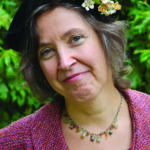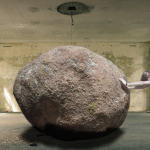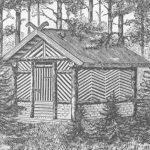Rebirth of the Body: The Spring Cleanse
Sussanna Czeranko, ND
Americans who eat meat three times a day and wash their meals down with coffee, tea, and ice water are a nation of dyspeptics, employing a vast army of physicians and dentists and spending millions of dollars for poisonous drugs and patent medicines nearly all of which contain more or less alcohol, besides other harmful ingredients.
Otto Carqué, 1905, p.151
If your tongue is coated on arising, if you are habitually constipated, which simply means the main drain of your body is clogged.
Pauline Pry, 1915, p.312
Year after year, he continues to load up his system with bodily waste, heavy food and heavier medicine, until finally he staggers and falls under the load, and the obliging undertaker assists him to his last resting place.
Dr. Ronald, 1920, p.132
Spring Cleansing
The Spring Cleanse is a universal ritual for naturopathic physicians everywhere, whether in active practice or not. Once the spring comes, it is time to rid the body of the accumulation of a lazy, sedentary winter of indulgences which likely started on Thanksgiving and built up a head of steam right into the New Year, topped off finally by the Super Bowl. Spring cleanses aren’t only about shedding the extra pounds gained, but also about regaining our lost energy. This wonderful theme of restoration and renewal is archetypically naturopathic. Over the past quarter-century of naturopathic practice, I have seen and used many products that have come and gone, promising to enhance spring cleaning. Let’s take a few moments to check out the spring cleanses of our forebears a century ago. Even with their scanty apothecaries (if they had one at all), they definitely had some spring cleanse tricks up their sleeves for their patients who desired bountiful health.
According to Dr Ronald, a prominent, early naturopath, “Spring is clean-up time.” (Ronald, 1920, p.132) Springtime is when Mother Nature is very busy, herself, when the world rebounds in many latitudes from hibernating plants and animals to spring flowers and a new carpet of green grass, warm winds, and bright blue sky. As Lust puts it, building on this theme of spring renewal, “The same profound and mysterious creative force that is working outward constantly through all nature and that seems to become quickened at this time of the year [springtime], operates within the body in the same strange and wonderful way.” (Lust, 1907, p.102) He continues, “In every one of the millions of tiny, living, breathing, sentient cells that go to make up our bodies, a change is taking place.” (Lust, 1907, p.102) The metabolism speeds up in the spring in comparison to the winter months. For those enjoying good health, the springtime feels like a time of renewal and the longer days bring more energy and vitality. Carl Strueh states, “In Spring our entire cellular and organic activities are livelier than at any other time of the year, and our blood undergoes changes as does the sap of a tree. Impurities are thrown out and will no longer impede the free action of the body.” (Strueh, 1916, p.253)
However, for some who have arrived to the spring after a winter of accumulated overeating and poor lifestyle habits, they may have not enough vitality to eliminate these impurities. Feeling sluggish and weak, as well as experiencing headaches, constipation, etc, can indicate that the regenerating forces of nature are not working and more is needed.
The early naturopaths were very familiar with the causes of getting sick, and the number of articles on this subject is vast. “Too much meat, too little exercise, bad air, dirty skins, and the use of tobacco, with the drinking of beer, wines, and spirits, produce a low form of vitality, and the result is lingering illness and slow recovery from wounds and accidents.” (Allinson, 1905, p.122) Erieg weighs in, attributing bad lifestyle as a major contributor to disease. He writes, “Excessive eating, too high living, impoverishes the system and makes the body sick and susceptible to disease.” (Erieg, 1906, p.259) Pauline Pry cuts to the chase when writing about the spring cleanse: “The average person over-eats, the average person eats much rubbish, the stomach therefore has more than it needs, more than it can handle!” (Pry, 1915, p.312)
Overeating was certainly a contributing factor to the need for a spring cleanse; so, too, were the wrong kinds of food consumed. Arnold Ehret, author of The Mucusless Diet, blamed mucus-forming foods as the big culprit. He included in this category, “potatoes, grain-meal, rice … and meat-materials [and if] boiled long enough, we receive a jelly-like slime (mucus) or paste used by bookbinders and carpenters.” (Ehret, 1912, p.167) Adopting a vegetarian diet did not necessarily make a person immune to disease if that person continued eating more mucus-forming foods such as “bread, pap [porridge], milk, butter, eggs, cheese and farinaceous stuffs, especially starch stuff.” (Ehret, 1912, p.169)
Symptoms from not living within the laws of nature were predictable and completely expected. “Usually the symptoms are dull headache, slow blood circulation, dull eyes, tongue coated, poor appetite, bowels constipated, extreme lethargy and mind and liver inactive.” (Lust, 1907, p.102) Lust adds that these symptoms can be further aggravated if the patient continues with their winter habits of over-indulging in rich, heavy foods that the body “neither desires nor is capable of assimilating.” (Lust, 1907, p.102) Ehret reminds us that if we indulge year after year, “The intestines and the stomach are gradually being pasted and slimed up to such an extent that this paste of floral and this slime of faunal origin turn into fermentation, clog up the blood-vessels and finally decompose the stagnating blood.” (Ehret, 1912, p.167) Thus, all the more reason for an annual purge and restoration.
The early naturopaths contended that when there are ailments in the spring, it is a sign that the blood has been encumbered or overwhelmed by a winter of excesses. “If the system is unable to eliminate properly its dead cell matter and whatever other impurities there may be, the blood becomes surcharged with the poisons and an ailment sets in.” (Lust, 1907, p.102) Otto Carqué blamed ignorance for illnesses: “The majority of people still live in complete darkness in regard to the mechanism of their bodies; they eat and drink themselves sick and then lay the blame of their sickness and failures on some imaginary causes.” (Carqué, 1905, p.151)
When we feel sluggish in the spring, our natural impulse is do a spring cleanse or use a tonic. A century ago, a tonic would have consisted of an alcoholic concoction prepared by a pharmacist but, from the point of view of the naturopaths of the period, of little enduring value to the patient because it offered, at best, temporary relief. Ronald describes the folly and error in choosing a short cut to health for those who “begin to suffer for his lack of observation and self-control, and [who] presume to square [themselves] with Nature by drinking some sassafras tea, taking tablespoons of tonics or lapping a little liver regulator.” (Ronald, 1920, p.132) This scenario sounds just too familiar. Ronald continues,
When he imposes upon Nature a little too far, and she rebels, reacts and attempts to burn up the accumulated rubbish in his tissues by starting a little fire of fever, he calls in the quickest medician who proceeds to smother the fire with antipyretics, slow up the circulation with heart depressants, paralyze the pained nerve system with hypnotics and leave the ‘grateful patient’ with all of his tubes stopped up and stream sluggish, his carburetor clogged and his batteries weak. (Ronald, 1920, p.132)
Lust counsels, “If we expect to avoid spring ailments we must look to purifying our blood by simple, natural means.” (Lust, 1907, p.103) One of the means of purifying blood was changing eating habits. “A most important thing in meeting the change within the system at this time of the year is to adopt a suitable diet.” (Lust, 1907, p.103)
Dietetics
In spring, our desire for food intake decreases, and our food preferences change. If we continue to consume the same heavy, warming foods of winter, “we must expect that our system will become clogged, our spirits depressed and, as is very often the case, that the poisons within the body will break out in disagreeable forms.” (Lust, 1907, p.103) Louisa Lust saw the spring as the natural time for purification that coincided with the religious event, Lent. Winter was associated with “the season of feasting―when heavier dishes rich in oils, starches and proteins are in order, [and] the system naturally accumulates a certain amount of morbid waste matter.” (Lust, 1918, p.278) Spring, then, in her view, was the perfect time to help the body eliminate its morbid matter. Louisa Lust recommended that “fruits and vegetables should be the principal articles of diet, and these should be prepared and eaten in their raw state.” (Lust, 1918, p.278)
Benedict Lust reminds us that in the spring, there is an abundance of fresh local vegetables available to eat. Lust sings the praises of the spring cleanse: “Spring is the time for taking one of the best cures known to Naturopathy: that is the salad-cure.” (Lust, 1907, p.97) Some of these plants used in the salad-cure included: “garden and water-cress, lettuce, common corn valerian, the tender leaves of dandelion.” (Lust, 1907, p.97) One of the benefits of vegetables that Lust recognized was their fiber, aiding elimination in the bowels. In an article on the spring treatments, Lust states, “The supposedly waste vegetable matter stimulates the activity of the bowels and this is a point of great value.” (Lust, 1907, p.97)
Another benefit of eating fresh, raw salads as part of a spring cleanse, Lust explains, was that “the fresh green salads contain a vital force which is lacking in dried, cooked or preserved vegetables.” (Lust, 1907, p.98) We must keep in mind that Lust is not from a time of supermarkets and 101 choices in vegetables, nor would refrigeration and long distance shipping of fresh vegetables have been available 12 months a year.
It was very clear to the early naturopaths that there was an enduring connection between diet and health. One author states, “One day [medical doctors will] be sending their patients to the grocery store for their medicine.” (Allen, 1917, p.307) Of course, food can be responsible for restoring health just as it can cause disease. Ehret poses a simple question: “If nourishment by mucus and over-eating is the true fundamental cause of all diseases without exception, which I can prove to anybody on his own body, then there can exist but one natural remedy, i.e., fasting and fruit-diet.” (Ehret, 1912, p.314)
Fasting
Fasting was considered by the early naturopaths as one of the most important ways to clean the body. The analogy of spring-cleaning a body vs spring-cleaning a house is an appropriate one. Body and house after a thorough cleaning both look and feel good. Naturopaths taking note of natural settings in which animals in the wild are sick, reported that those animals abstained from eating until they recovered their health. Ehret concludes, “A sick person cannot eat too little.” (Ehret, 1917, p.257)
Lust and others recommended fasting for short or long periods to purify the blood. A short fast of a few days was acceptable but “the longer the fast is, the purer the circulation of the blood will become.” (Lust, 1907, p.103) Short, weekly fasts had favorable outcomes. Ehret describes a short fast: “In [the] case of a 36 hours’ fasting, nothing is taken until the morning after the next, and then nothing but fruits for breakfast.” (Ehret, 1912, p.370) Ehret continues, “The juices of fruits cause a moving of the mucus-masses which have loosened; in the case of sick and old people this treatment must be carefully individualized.” (Ehret, 1912, p.370) Ehret, an authority on fasting, insisted that “Naturopaths must know how to prepare for themselves and conduct, and finish a fast, with the right diet for each step, before taking a patient [through a fast].” (Ehret, 1917, p.234)
Ehret observed, “Each healthy or sick person deposits on the tongue a stinking mucus as soon as he reduces his food or fasts. This occurs also on the mucous membrane of the stomach, of which the tongue is an exact copy.” (Ehret, 1912, p.167) The body during a fast is throwing off the mucus which has taken weeks, months, and even years to accumulate.
For those who did not want to give up their mucus-forming foods, Ehret recommended chewing their food thoroughly or “Fletcheriz[ing]” their food.S Ehret cheekily cautions, “Mucous-eaters must do so especially, if they do not wish to sink into their graves all too soon. The strong secretion of saliva in slow chewing decreases the formation of mucus and prevents the over-eating.” (Ehret, 1912, p.371)
Water
Water is the universal cleanser and there is never a better time of the year than spring to increase our water consumption. Lust states, “There is no better and less expensive medicine for purifying and thinning the blood and cleansing the body internally than this inexpensive and invaluable therapeutic agent.” (Lust, 1907, p.103) Ronald adds that drinking healthy water was one way, and another use of water was to “begin the day with a cold bath.” (Ronald, 1920, p.133) He continues,
If you can’t stand it cold, take it as cold as you can and soon the colder it is the more you will enjoy it. A quick sponge is best. Beginning with the extremities, wet the body and rub with a rough towel until dry and warm. This should not take more than five minutes. (Ronald, 1920, p.133)
One of the golden rules of hydrotherapy and cold water applications is that the patient must warm his/her body with some form of exercise or stretching exercises.
Air
Air quality was as vital as water or food quality for those interested in restoring health during a spring cleanse. The early naturopaths advocated often the importance of sleeping in bedrooms with open windows. In the following [somewhat long and convoluted] sentence, Lust explains,
If we take into consideration that each sleeper during the night exhales about 300 quarts of carbonic acid [carbon dioxide], besides steam and more or less decomposed foul matter, not to mention other gaseous mixtures, and consider that these mixtures become assimilated with the air of the bedroom to such an extent that they are continually inhaled and exhaled by the sleepers, one will understand how indispensably necessary the cleanliness of the bedroom air is for the health of the sleepers. (Lust, 1909, p.158)
When we understand the process of healing, then we know how to restore a sick body back to health. Having clarity about the healing process gives us the tools to practice naturopathic medicine with confidence and with satisfying clinical results. One of the remarkable naturopaths of this period wrote about this point with clarity as vivid as a sunrise. Otto Carqué knew what healing was and described it with precision:
All healing must come from within, and every sick organism can only recover if it is put under the same conditions which are necessary for the perpetuation and propagation of organic life in general; these are in their natural orders as follows: sunshine, fresh air, water as drink, fruits as food, exercise and rest. The preservation of health, therefore, is only a matter of living in perfect harmony with nature. (Carqué, 1905, p.152)
I would like to leave the last word to Meta Zimerman:
Let Nature’s own foods purify and upbuild your organism, in order to enable it to do its duty, in secreting and expelling its waste products and when you have done all that, your misery will have left you, and vanished, not to return, unless you invite it again, by an unnatural, dissipating mode of living, which, however, is almost excluded, after you have become acquainted with your kind mother Nature. (Zimerman, 1920, p.395)
S Horace Fletcher wrote The A B Z of Our Own Nutrition (1903) and The New Glutton or Epicure (1896) as a means of combatting overeating and obesity. Fletcher discovered the benefits of chewing food until it is completely liquified and tasteless before swallowing, which was called “Fletcherize.”
 Sussanna Czeranko ND, BBE incorporates “nature-cure” approaches to primary care by including balneotherapy, breathing therapy, and nutrition into her naturopathic practice. Dr Czeranko is a faculty member working as the Rare Books curator at NCNM and is currently compiling a 12-volume series based upon the journals published early in the last century by Benedict Lust. Three of the books have been published: Origins of Naturopathic Medicine, Philosophy of Naturopathic Medicine, and Dietetics of Naturopathic Medicine. In addition to her work in balneotherapy, she is the founder of the Breathing Academy, a training institute for naturopaths to incorporate a scientific model of breathing therapy called Buteyko into their practice. She is a founding board member of the International Congress of Naturopathic Medicine and a member of the International Society of Medical Hydrology.
Sussanna Czeranko ND, BBE incorporates “nature-cure” approaches to primary care by including balneotherapy, breathing therapy, and nutrition into her naturopathic practice. Dr Czeranko is a faculty member working as the Rare Books curator at NCNM and is currently compiling a 12-volume series based upon the journals published early in the last century by Benedict Lust. Three of the books have been published: Origins of Naturopathic Medicine, Philosophy of Naturopathic Medicine, and Dietetics of Naturopathic Medicine. In addition to her work in balneotherapy, she is the founder of the Breathing Academy, a training institute for naturopaths to incorporate a scientific model of breathing therapy called Buteyko into their practice. She is a founding board member of the International Congress of Naturopathic Medicine and a member of the International Society of Medical Hydrology.
References
- Allinson, T.R. (1905). The healing power of nature. The Naturopath and Herald of Health, VI(5), 121-123.
- Carqué, O. (1905). Nutrition in relation to health and disease. The Naturopath and Herald of Health, VI(6), 151-157.
- Ehret, A. (1912). Sick people. The Naturopath and Herald of Health, XVII(3), 166-170.
- Ehret, A. (1912). Sick people (continuation). The Naturopath and Herald of Health, XVII(5), 314-315.
- Ehret, A. (1917). My diet of healing. Herald of Health and Naturopath, XXII(5), 257-260.
- Ehret, A. (1919). My mucusless diet and Naturopathy. Herald of Health and Naturopath, XXIV(5), 233-235.
- Erieg, S.T. (1906). Plain living and high thinking. The Naturopath and Herald of Health, VII(7), 259.
- Lust, B. (1907). Cause and cure of ailments according to nature-therapeutics, The Naturopath and Herald of Health, VIII(4), 97-100.
- Lust, B. (1907). Timely talks. The Naturopath and Herald of Health, VIII(4), 101-103.
- Lust, B. (1909). Spring cures for nervous and corpulent people. The Naturopath and Herald of Health, XIV(3), 158-159.
- Lust, L. (1918). Kitchen and table. Herald of Health and Naturopath, XXIII(3), 278.
- Pry, P. (1915). Short cuts to health. The Naturopath and Herald of Health, XX(5), 312-314.
- Ronald, (1920). Clean-up time. Herald of Health and Naturopath, XXV(3), 132-133.
- Strueh, C. (1916). The spring cure. Herald of Health and Naturopath, XXI(4), 253.
- Zimerman, M. (1920). Why we become sick. Herald of Health and Naturopath, XXV(8), 395-396.










